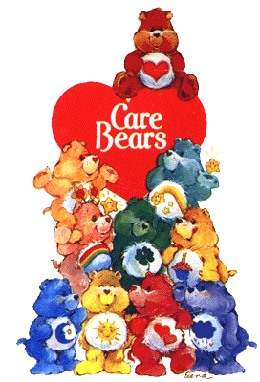Violet Parr Does NOT Grow Up Within A Single Scene
Caution: This post deals with mature themes (but in a mature way).
On Sunday, while searching for a suitable picture of Mr Potato Head for that day’s post (yes, really), I managed to stumble across the rather intriguing blog that is ANIMadams, which focuses exclusively on women and females in general and how they’re portrayed in animation (and a few related markets).
Sadly in hibernation since this past June (2011), the blog would take what many would consider to be a feminist view/approach and while I’m no masculine feminist (Jerry Springer can keep that title), I’ve come to appreciate what the three contributors have to say (to a certain extent).
Which leads to today’s post concerning The Incredibles, a film that remains firmly within my top 3 all time favourites. The post from ANIMadams deals with Violet in particular. Now Violet is certainly my favourite characters in that film for many reasons. Chief among them is that I see a lot of myself in her and how she struggles with her shyness.
Entitled “Let’s Talk About Sex-ualization” the post discusses how the writer views the transformation of Violet during the course of the film from an insecure teenager to an assertive super hero:
It’s not until Helen can be honest with herself and the family, being the superhero she loves to be, that she can properly model for her children. She has a heart-to-heart with her daughter after which Violet strikes a stronger pose than the audience has become acclimated to. It is after this that she begins to be much more active, coming out from behind the veil of her own hair.
It’s safe to say that yes, Violet is portrayed in a different light after this talk with her mother, she’s more assertive, she no longer hides away from real life and she can see clearly with both her eyes the challenges she faces. It’s partly why the film is so fantastic; it exhibits the power of individuals to change themselves for the better.
Then, we get to this line:
Violet is then inadvertently sexualized and objectified. While suggesting to her parents – taking charge like an adult would – a way for them to escape, Violet’s rear is placed directly in the foreground of the camera as her parents bicker in the background. Her entire rear and only her rear.
Here is the offending shot:
And here is the argument:
Let me emphasize: I do not believe this is intentional. But I do find it to be a very odd coincidence that once Violet has decided to step up and into adolescence, she is immediately sexualized, even for a few seconds.
No, it is intentional, just not in the way youbelieve. Brad Bird is one of the best animation directors out there at the moment and he’s the kind of guy who knows exactly the kind of shot he wants. This one in particular is meant to be seen from a low angle because the rocket has to be shown in the background. It is where the family are ultimately heading. Placing the Incredibles above the level of the viewer also suggests that they have regained/attained their status as superheroes, they’re not superior, but we do look up to them.
The nature of the scene dictates that Violet propose the solution to the family’s problem. Now you could say that having her voice her opinion could easily have been conducted off-screen, however that would result in some jerky direction of the kind that Brad Bird isn’t known for. Having Violet appear in the scene reminds the audience that she’s present before she makes a suggestion. Based on the alignment of the shot mentioned above, it would seem natural that we would not see her head but the lower part of her figure instead.
What the ANIMadams point alludes to is the rapid maturing that Violet’s character leads to her “sexualisation” in this scene. This I disagree with on the grounds that while she does a lot of growing-up in the course of the film, she isn’t sexualised in the slightest during any of it. She is interested in Tony Rydinger before and after the events of the film. The only difference is that she gains the courage to actually talk to him.
Having her butt on-screen for a few seconds does not constitute turning Violet into an object. If anything, the viewer’s attention is focused on Bob and Helen and is only vaguely aware of Violet’s intrusion until both parents turn around, at which point we immediately cut to Violet’s face. Besides, we’re more concerned at this point in the film with how the family is going to stop Syndrome anyway, right?
The ANIMadam’s post over-simplifies the rather complex developments that teenagers undergo in course of a number of years down into a single shot, and not even a long one at that. While it’s completely fair to say that Violet does begin her path to womanhood during the film, it is completely unfair to say that she was thrust down that path without her consent by the director.
Do you have any thoughts comments? Feel free to leave them below. 🙂
Violet Parr Does NOT Grow Up Within A Single Scene Read More »



